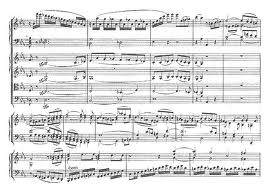Mozart’s twenty-seven piano concerti represent the absolute apotheosis of the form: in the same way that Haydn perfected the string quartet, Mozart took the piano concerto and brought it to its peak.
His later works in this genre, written in Vienna under increasingly difficult conditions of financial worry and illness, seem to reach for ever greater heights of expression and classical grace. They are at once brilliant and impressive, yet never border on being shallow or superficial; indeed, they explore the entire range of human emotion. The balance between orchestra and soloist is nothing short of miraculous, and the intensity of expression that is achieved with astonishingly simple means is unsurpassed in the literature. In a way, perhaps these concerti can be called the most ‘Mozartian’ music of all.
The C minor concerto has justly become a perennial favorite. One of Mozart’s most personal creations, it is forceful and tragic, full of shadows and darkness. He completed the work in March 1786, premièring it in April, when he conducted from the keyboard. Perhaps most remarkable is the richness and complexity of the woodwind writing throughout, interacting with the soloist in a perfect partnership usually only found in chamber music.
The first movement, uncluttered and completely lacking in embroidery, never once sacrifices musical expression for sheer virtuosity. After such drama, no one else could have written such a transcendently beautiful larghetto, cast here in crystalline rondo form of almost divine simplicity. The work finishes with a set of variations, rushing to a dramatic close with a crushingly tragic coda in 6/8 time.
Piano Concerto No. 24 in C Minor
K. 491
Composed in 1786
By Wolfgang Amadeus Mozart






